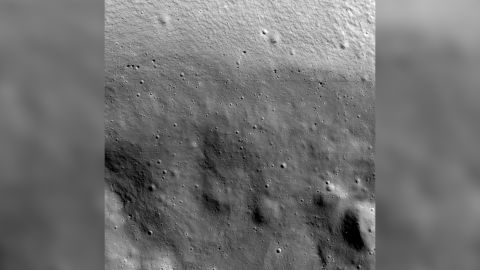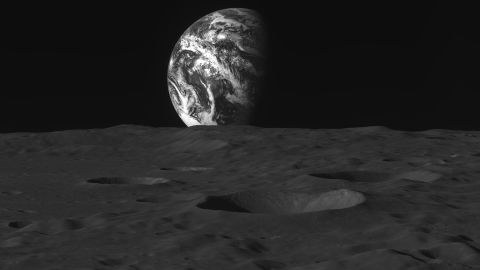Sign up for CNN’s Wonder Theory science newsletter. Explore the universe with news on fascinating discoveries, scientific advancements and more.
CNN
—
South Korea’s first lunar probe has returned some striking images of Earth and the moon.
The Korean Pathfinder Lunar Orbiter began orbiting the moon in December after the Korea Aerospace Research Institute’s spacecraft had launched aboard a SpaceX Falcon 9 rocket from Cape Canaveral, Florida, in August.
The probe, also known as “Danuri” thanks to a public naming contest in the country that combined the Korean words for moon and enjoy, will orbit the moon for 11 months.
The stunning images captured by the probe showcasing Earth and the moon in black and white look like something photographer Ansel Adams might have taken had he ever enjoyed such an opportunity. The orbiter is flying at an altitude of 62 miles (100 kilometers) above the lunar surface.

Data collected by the orbiter will be used to inform future lunar exploration, including the Artemis program, which eventually aims to land humans at the lunar south pole in late 2024.
The probe’s imagery could help with selecting landing sites for future Artemis missions, as well as mapping resources like water.
South Korea signed the Artemis Accords in 2021 and collaborates with NASA on lunar exploration.

The probe carries six instruments, including the NASA-funded ShadowCam, developed by Arizona State University.
Universities and research institutes in South Korea developed the probe’s high-resolution camera to scout future landing sites, a polarized camera to analyze surface particles, an instrument to measure the lunar magnetic field and a gamma-ray spectrometer to identify elements in the lunar surface.
ShadowCam’s main objective is to take images of the permanently shadowed regions near the lunar poles that will help researchers searching for ice, mapping terrain and watching for seasonal changes.

ShadowCam is several hundred times more sensitive than the cameras on NASA’s Lunar Reconnaissance Orbiter, enabling it to take detailed images in incredibly low-light conditions.
The probe recently used ShadowCam to peer inside Shackleton crater, one of the permanently shadowed regions on the lunar surface.

Previous images taken of this crater by the Lunar Reconnaissance Orbiter were able to spot its illuminated rim, but ShadowCam could actually see the interior, including the crater floor and boulder tracks that rocks left behind after tumbling inside.
Officials at the Korea Aerospace Research Institute, or KARI, sees the Danuri orbiter as a “first step for ensuring and verifying its capability of space exploration,” according to the organization.
The US, Russia, Japan, China, European Union and India have all sent missions to the moon, and South Korea wants to dive into space exploration and develop its own missions.

“Korea is planning to successfully land onto the surface of the Moon or asteroids and make safe return,” according to the institute. “Korea is expecting to achieve strategic space technologies.”
In addition to the orbiter, KARI aims to make an initial lunar landing on the moon by 2030.
